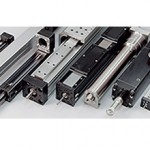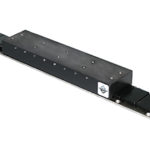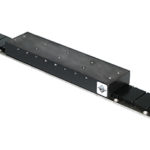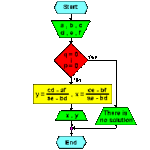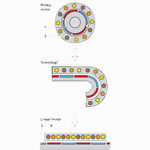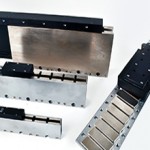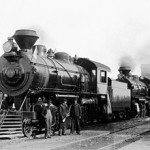Primatics PXL43B long travel linear stage is a small form factor, high precision motion stage. A linear motor and linear encoder provide precise positioning to 150 mm. Anti-creep cage cross roller linear bearings result in smooth, flat, and straight motion. The PXL43 series is ideal for use in applications for precision assembly and inspection. Its compact […]
Linear Motor
What are the main types of linear actuators?
Updated August 2017 || Linear actuators come in myriad configurations to suit almost any application, environment or industry. They’re primarily categorized by their drive mechanism; then manufacturers use other features such as the type of guide and housing to further differentiate them. Below is an explanation of the most common linear actuator categories. Belt-driven and […]
What are iron core linear motors?
Linear motors are often classified as either ironless or iron core, referring to how their primary parts are constructed. Ironless linear motors have a primary made of windings that are embedded in epoxy resin. In iron core linear motors, the windings are mounted in an iron lamination stack. Like the rotor and stator of a […]
New low-profile Javelin series linear motors from Celera Motion
Designed for easy integration into OEM assemblies, the Applimotion Javelin Series Linear Motors are offered in a wide range of low-profile form factors. Frameless kit construction enables easy integration into machinery, linear stages and actuators. Built using state-of-the art magnetic designs, the Javelin Series delivers high acceleration and high speeds in compact, lightweight form factors. […]
What is linear motor commutation?
The process of linear motor commutation is not well understood and is often glossed over, but it has a significant effect on performance. Motor force (torque in a rotary motor) is proportional to the magnitudes of the magnetic fields of the magnet track (stator in a rotary motor) and forcer (rotor in a rotary motor), multiplied […]
Miniature linear stage delivers higher force density
Breakthrough Miniature Linear Stage delivers five times more force and twice the force density compared to similar competitive products. Dover Motion, a leading technology solution provider for motion control systems, announces the launch of a new product, the XMG Miniature Linear Stage. This new stage is a high-performance version of Dover Motion’s Miniature Moving Magnet […]
A selection guide for linear systems
Gone are the days when machine designers and builders had to choose between constructing their own linear system from scratch or settling for a limited range of pre-assembled systems that, in most cases, were an imperfect fit for their application. Manufacturers today offer systems based on a range of drive mechanisms—ball screws, belts, rack and pinions, linear motors, […]
Linear motors explained
The use of linear motors in industries as diverse as packaging and semiconductor manufacturing is a testament to their suitability for a wide range of applications. In recent years, manufacturers have worked hard to remove the “mystique” that for so long surrounded these products and hindered their widespread usage, but linear motors still face several challenges […]
H2W Technologies Manufactures Brushless Linear Motors
With the recent acquisition of the Baldor linear motion product line, H2W Technologies has begun manufacturing brushless linear motors in its Santa Clarita, CA facility. With extensive experience in designing and building custom linear motion systems, and now, with the tooling necessary to produce both ironless and iron-core brushless linear motors, H2W has the capability […]
Linear Motion in the Third Industrial Revolution
According to The Economist magazine, a third revolution is coming for the manufacturing industry, ushered in by 3D printing, new materials, and collaborative manufacturing services. Anyone who has watched the 3D printing industry develop over the past decade, or even the past five years, will likely agree. Gartner forecasts that worldwide shipments of 3D printers […]


